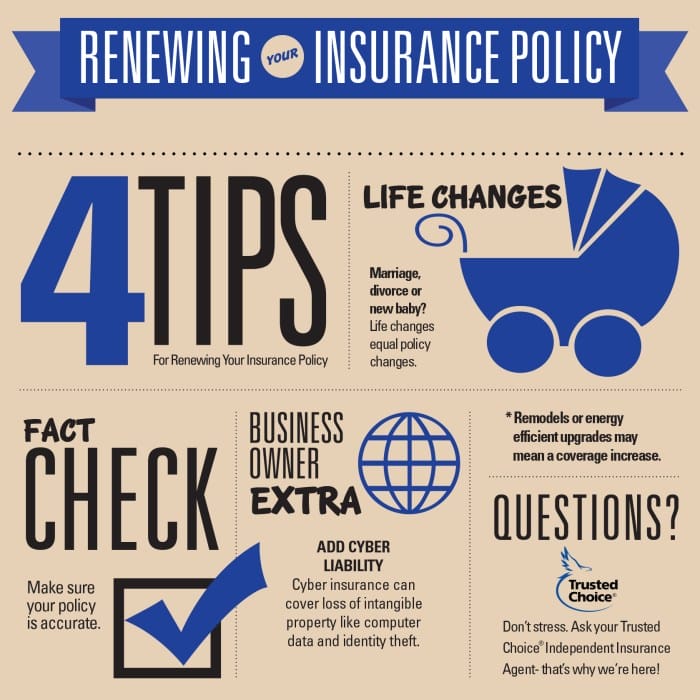In the realm of homeownership, securing the right home insurance policy is akin to erecting a protective shield around your cherished abode. With a plethora of insurance providers and policies vying for your attention, navigating the maze of options can be daunting.
Fear not, intrepid homeowner, for this comprehensive guide will equip you with expert tips and insights to help you find the perfect home insurance policy that aligns with your needs and budget.
As a homeowner, you bear the responsibility of safeguarding your investment, your sanctuary, and the precious memories woven within its walls. Home insurance serves as your trusted ally in this endeavor, providing financial protection against unforeseen events that could wreak havoc upon your dwelling.
Embark on this journey with us, and together, we shall unravel the intricacies of home insurance, ensuring your peace of mind and the unwavering protection of your beloved home.
Introduction
Home insurance is a form of insurance that covers losses or damages to your home, its contents, and other structures on your property. It is crucial for protecting your financial investment in your home and your belongings.
Choosing the right home insurance policy is essential to ensure that you have the coverage you need at a price you can afford. There are many different home insurance policies available, so it is important to shop around and compare quotes from different insurance companies.
Factors to Consider
When shopping for home insurance, there are a few factors you should consider:
- The value of your home and its contents.
- The type of construction of your home.
- The location of your home.
- Your claims history.
- Your deductible.
Types of Home Insurance Coverage
There are two main types of home insurance coverage:
- Actual cash value: This type of coverage pays you the actual cash value of your home and its contents at the time of the loss. This means that you will not be reimbursed for the full replacement cost of your belongings.
- Replacement cost: This type of coverage pays you the full replacement cost of your home and its contents, regardless of their age or condition.
Riders
You can also purchase riders to add additional coverage to your home insurance policy. Some common riders include:
- Flood insurance: This type of insurance covers damage caused by flooding.
- Earthquake insurance: This type of insurance covers damage caused by earthquakes.
- Jewelry insurance: This type of insurance covers loss or damage to jewelry.
Factors to Consider
When selecting a home insurance policy, it’s crucial to consider several key factors to ensure adequate coverage and protection for your property.
These factors include assessing the value of your home, understanding the various coverage options available, and determining the appropriate deductible amount.
Assessing Home’s Value
Accurately determining the value of your home is essential for obtaining the right amount of coverage. An accurate assessment ensures you have sufficient coverage to rebuild or repair your home in case of a covered loss.
You can determine your home’s value through various methods, such as hiring a professional appraiser, using online valuation tools, or checking recent sales prices of similar properties in your area.
Coverage Options
Home insurance policies typically offer a range of coverage options to protect your home and personal belongings. Understanding these options and choosing the ones that best suit your needs is crucial.
- Dwelling Coverage: Covers the physical structure of your home, including walls, roof, and attached structures.
- Personal Property Coverage: Protects your personal belongings, such as furniture, clothing, and electronics, in case of damage or theft.
- Liability Coverage: Provides protection if someone is injured on your property or if your actions cause damage to someone else’s property.
- Additional Living Expenses Coverage: Covers the cost of living expenses, such as hotel bills and meals, if you’re unable to live in your home due to a covered loss.
Deductibles
A deductible is the amount you pay out-of-pocket before your insurance coverage kicks in. Choosing the right deductible is important as it affects your monthly premium and the amount you’ll pay in case of a claim.
Higher deductibles typically result in lower premiums, while lower deductibles lead to higher premiums. Consider your financial situation and risk tolerance when selecting a deductible.
Research and Comparison

Choosing the right home insurance provider is a significant decision that requires careful research and comparison. By conducting thorough due diligence, you can ensure you select a policy that offers comprehensive coverage, competitive rates, and reliable customer service.
To begin your research, gather quotes from multiple insurance companies. This will give you a clear understanding of the coverage options and pricing available in the market. When comparing quotes, pay attention to the following factors:
Coverage Limits and Deductibles
Review the coverage limits and deductibles offered by each insurance provider. Make sure the policy provides adequate coverage for your home, personal belongings, and any additional structures on your property. Consider your budget and risk tolerance when selecting a deductible.
A higher deductible will typically result in lower premiums, but it also means you will pay more out of pocket in the event of a claim.
Policy Exclusions and Limitations
Be aware of any exclusions or limitations in the policy. These are specific situations or circumstances that are not covered by the insurance policy. Make sure you understand the exclusions and limitations before purchasing the policy so that you are not caught off guard in the event of a claim.
Claims Handling Process
Research the claims handling process of each insurance company. Find out how easy it is to file a claim, how long it typically takes to process a claim, and what the customer satisfaction ratings are for the company. You want to choose an insurance provider that has a reputation for handling claims quickly and fairly.
Customer Service and Support
Consider the quality of customer service and support offered by each insurance company. You want to choose a provider that is responsive to your inquiries and provides helpful and knowledgeable support. Check online reviews and ratings to see what other customers have experienced with the company’s customer service.
Types of Home Insurance Policies

Understanding the different types of home insurance policies is essential to select the coverage that best fits your needs and budget. Let’s explore the key differences between common policy types.
HO-1: Basic Coverage
The HO-1 policy offers the most basic level of coverage for your home’s structure and personal belongings. It protects against specific perils, such as fire, lightning, windstorms, hail, and vandalism.
HO-2: Broad Coverage
The HO-2 policy expands the coverage provided by HO-1 and includes additional perils, such as theft, accidental damage, and damage caused by falling objects or weight of ice, snow, or sleet.
HO-3: Special Form Coverage
The HO-3 policy offers the most comprehensive coverage among standard home insurance policies. It covers all perils except those specifically excluded in the policy, such as floods, earthquakes, and acts of war.
Other Policy Types
In addition to the standard HO policies, there are specialized policies designed for specific types of homes or situations:
- HO-4: Renters Insurance: Protects personal belongings and liability for renters.
- HO-5: Comprehensive Coverage for High-Value Homes: Offers broader coverage and higher limits for valuable items.
- HO-6: Condo Insurance: Covers the interior of a condominium unit and personal belongings.
- HO-7: Mobile Home Insurance: Provides coverage for mobile or manufactured homes.
- HO-8: Older Home Insurance: Designed for homes built before 1940.
Coverage Options

Home insurance policies offer a wide range of coverage options to protect homeowners from various risks and liabilities. These options provide financial protection for the insured’s property, belongings, and personal liability. Understanding the different coverage options available is crucial for homeowners to make informed decisions and tailor their insurance policies to their specific needs.
Dwelling Coverage
Dwelling coverage provides financial protection for the physical structure of the insured’s home, including the main dwelling, attached structures like garages or porches, and other permanent fixtures. This coverage safeguards the homeowner from damages or losses caused by covered perils, such as fire, lightning, windstorms, hail, vandalism, and theft.
The coverage limit for dwelling coverage is typically based on the replacement cost of the home, ensuring that the homeowner can rebuild or repair their property in case of a covered loss.
Personal Property Coverage
Personal property coverage protects the homeowner’s belongings and contents inside the insured home. This coverage includes items like furniture, appliances, electronics, clothing, and personal belongings. Personal property coverage typically covers losses due to covered perils similar to those covered under dwelling coverage.
The coverage limit for personal property is usually a percentage of the dwelling coverage limit, and homeowners can opt for additional coverage for valuable items such as jewelry or artwork.
Liability Coverage
Liability coverage protects homeowners from legal liability arising from accidents or injuries that occur on their property. This coverage is crucial for safeguarding homeowners from financial losses if someone is injured or their property is damaged while on the insured premises.
Liability coverage typically covers bodily injury and property damage caused by the homeowner, their family members, or their pets. The coverage limit for liability coverage is usually expressed in thousands of dollars, and homeowners can choose higher limits for increased protection.
Additional Living Expenses Coverage
Additional living expenses coverage provides financial assistance to homeowners who are temporarily displaced from their home due to a covered loss. This coverage helps cover the additional costs incurred while the home is being repaired or rebuilt, such as hotel accommodation, meals, and other living expenses.
Additional living expenses coverage is typically included in home insurance policies, but the coverage limit may vary.
Understanding Riders and Endorsements
Home insurance policies often come with a variety of riders and endorsements that can be added to provide additional coverage or protection. These add-ons can be tailored to your specific needs and help you ensure that your home and belongings are adequately protected.
Riders and endorsements typically come with an additional premium, but they can provide valuable peace of mind knowing that you have comprehensive coverage. Some common riders and endorsements include:
Flood Insurance
Flood insurance is an essential rider for homeowners in areas prone to flooding. It provides coverage for damage caused by floodwaters, which is typically not covered by standard home insurance policies. Flood insurance can be purchased through the National Flood Insurance Program (NFIP) or private insurers.
Earthquake Insurance
Earthquake insurance provides coverage for damage caused by earthquakes. It is essential for homeowners in areas prone to seismic activity. Earthquake insurance can be purchased as a separate policy or as a rider to your home insurance policy.
Sewer Backup Coverage
Sewer backup coverage provides coverage for damage caused by sewage backing up into your home. This can be a significant issue, especially in older homes with outdated plumbing systems. Sewer backup coverage can be purchased as a rider to your home insurance policy.
Finding the Right Insurance Company

Selecting the right home insurance company is crucial to ensure reliable coverage and a smooth claims process. Consider the following factors to make an informed decision:
Financial Stability: Choose a company with a strong financial foundation and a history of paying claims promptly. Research the company’s financial ratings from reputable agencies like AM Best, Standard & Poor’s, or Moody’s.
Customer Service
- Evaluate the company’s customer service record. Read online reviews and check with consumer advocacy organizations to gauge the company’s responsiveness, helpfulness, and overall customer satisfaction.
- Consider the availability of customer support channels, such as phone, email, and online chat, and their accessibility during and after business hours.
Claims Handling Process
- Investigate the company’s claims handling process. Look for information on the average time it takes to process and settle claims, the ease of filing a claim, and the availability of online claim submission options.
- Read reviews and testimonials from policyholders who have filed claims with the company to understand their experiences and satisfaction levels.
Discounts and Savings

Home insurance policies often come with various discounts and savings opportunities that can help policyholders reduce their premiums. Bundling multiple insurance policies with the same company, installing security systems, maintaining a good credit score, and being claims-free are common ways to save money on home insurance.
Bundling Policies
Bundling home insurance with other insurance policies, such as auto or umbrella insurance, can often lead to lower premiums. Insurance companies offer discounts to policyholders who bundle multiple policies with them, as it reduces their administrative costs and provides them with a more comprehensive view of the policyholder’s risk profile.
Installing Security Systems
Installing security systems, such as burglar alarms, fire alarms, and smoke detectors, can also result in lower home insurance premiums. These systems help protect the home from potential risks, making it less likely for the policyholder to file a claim.
Insurance companies recognize this and often offer discounts to policyholders who take steps to improve the security of their homes.
Maintaining a Good Credit Score
Maintaining a good credit score is another way to save money on home insurance. Insurance companies use credit scores to assess the risk of insuring a policyholder. A higher credit score indicates a lower risk of filing a claim, and therefore, insurance companies often offer lower premiums to policyholders with good credit scores.
Being Claims-Free
Policyholders who have a history of being claims-free are also more likely to receive lower home insurance premiums. Insurance companies view claims-free policyholders as lower-risk, as they are less likely to file claims in the future. As a result, insurance companies often offer discounts to policyholders who have maintained a claims-free record for a certain period of time.
Reading and Understanding the Policy

A home insurance policy is a legal contract between you and your insurance company. It’s important to carefully read and understand the policy so that you know what’s covered and what’s not. Here are some tips for deciphering insurance jargon and understanding policy terms and conditions:
Deciphering Insurance Jargon
- Definition section: The definition section of your policy defines important terms used throughout the policy.
- Coverage section: The coverage section of your policy describes the types of losses that are covered.
- Exclusions section: The exclusions section of your policy lists the types of losses that are not covered.
- Conditions section: The conditions section of your policy Artikels the requirements that you must meet in order to maintain coverage.
Understanding Policy Terms and Conditions
- Policy limits: Policy limits are the maximum amount that your insurance company will pay for a covered loss.
- Deductible: A deductible is the amount that you have to pay out of pocket before your insurance company starts to pay for a covered loss.
- Coinsurance: Coinsurance is a provision in your policy that requires you to maintain a certain amount of insurance coverage on your home.
- Replacement cost value: Replacement cost value is the amount it would cost to replace your home with a new one of similar size and quality.
Claims Process

In the unfortunate event of a covered loss, understanding the claims process and how to file a home insurance claim is crucial. Here’s a step-by-step guide to help you navigate the process smoothly:
Contact Your Insurance Company:
- Report the Claim: As soon as possible after a covered loss, contact your insurance company to report the claim. You can usually do this online, through their mobile app, or by calling their customer service line.
- Provide Necessary Information: Be prepared to provide details about the loss, including the date and time of the incident, the cause of the damage, and an estimate of the cost of repairs.
Gather Documentation:
- Document the Damage: Take photos and videos of the damage to your home and belongings. Keep all receipts related to the loss, such as repair estimates or invoices for temporary housing.
- Proof of Ownership: Provide proof of ownership for the damaged items, such as receipts, purchase orders, or appraisals.
Work with the Insurance Company:
- Claims Adjuster: Your insurance company will assign a claims adjuster to handle your claim. The adjuster will assess the damage, gather additional information, and determine the amount of your claim.
- Settlement: Once the claim is approved, you will receive a settlement from your insurance company. The settlement amount will be based on the coverage limits in your policy and the actual cost of repairs or replacement.
Final Thoughts

In conclusion, purchasing home insurance is a crucial step in safeguarding your property and ensuring your financial well-being. By following the expert tips Artikeld in this guide, you can navigate the complexities of home insurance with confidence, making informed decisions that align with your unique needs and circumstances.
Remember, the right home insurance policy will provide peace of mind, knowing that your cherished abode is shielded against life’s unpredictable storms.
Frequently Asked Questions
What factors should I consider when choosing a home insurance policy?
When selecting a home insurance policy, it is essential to evaluate key factors such as the value of your home, the coverage options available, and the deductibles associated with each policy. Additionally, consider your personal needs and preferences, such as the level of coverage you desire and any specific endorsements or riders you may require.
What are the different types of home insurance policies available?
There are various types of home insurance policies available, each offering varying levels of coverage. Common policy types include HO-1, HO-2, HO-3, and HO-5. HO-3 is the most comprehensive policy, providing coverage for a wide range of perils, including fire, theft, and natural disasters.
What coverage options are typically included in a home insurance policy?
Home insurance policies typically offer coverage for dwelling coverage, personal property coverage, liability coverage, and additional living expenses coverage. Dwelling coverage protects the structure of your home, while personal property coverage protects your belongings inside the home. Liability coverage provides protection against legal claims arising from injuries or damages caused to others on your property, and additional living expenses coverage reimburses you for expenses incurred if you are forced to live elsewhere due to a covered loss.
What are riders and endorsements in home insurance policies?
Riders and endorsements are optional add-ons to a home insurance policy that provide additional coverage for specific perils or situations. Common riders include flood insurance, earthquake insurance, and sewer backup coverage.



